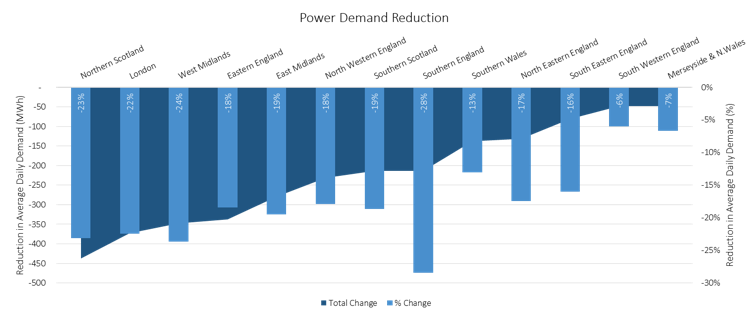Utilidex’s Trading Product Manager gives his views on what to expect and tools that will help manage the ever-changing situation.
As many of us have been hearing, decreased demand and falling energy prices have materially impacted energy costs for consumers on flexible procurement contracts. And as the economy begins to re-open, businesses will need to re-work their previous budgets – a complex and time-consuming task. This complexity will be compounded by the need for frequent modification as forecasted scenarios change.
To generate an accurate budget, a business will need to forecast its demand, account for traded and un-hedged volume, understand its weighted average traded price as well as current market prices, and must include non-commodity costs.
Each of the steps to generate a budget will contain challenges: businesses will not have a similar period on which to base energy forecasts, traded positions will need to be marked against the current market given the potential need for selling back at a loss, and suppliers will be revising their non-commodity cost estimates.
After a budget is created, finance managers and traders will need to update their assumptions, and large consumers with complex portfolios will experience many differing scenarios. It is expected that some offices/buildings will return to full capacity quickly, while others may remain partially empty for an extended period.
Looking at the national data, the chart below shows the reduction in average daily power demand for each Grid Supply Point (GSP). The data compares consumption prior to the lockdown against consumption after March 24 (the beginning of the UK lockdown).

Interestingly, and not surprisingly, each region has been impacted differently by the lockdown. The differences can result from similar types of work (e.g. one region may have more offices than factories) as well as differences in home energy efficiency.
The regional differences in Covid impact add to the budgeting complexity. Large consumers will need to model each of their sites to understand how their demand has decreased and how it will increase with the easing of lockdown. Applying a percentage increase in cost or even consumption will not yield an accurate budget.
Along with the need to create budgets, managers must also track and benchmark their portfolio against the budget. To track performance, they must calculate costs and consumption at the most granular level – another challenging and time-consuming task. As additional data becomes available, budgets will need to be updated again and a new performance analysis conducted.
Logical energy budgets will be critical for large businesses looking to forecast their cash-flow and income statements when re-opening. Digital data solutions can considerably assist energy managers to create and track budgets in a time-efficient manner. The Utilidex Energy.Hub allows users to forecast demand, analyse their positions and trading performance, and manage non-commodity costs to help them create and automatically track budgets.
For further information contact Richard Lewin, [email protected]



